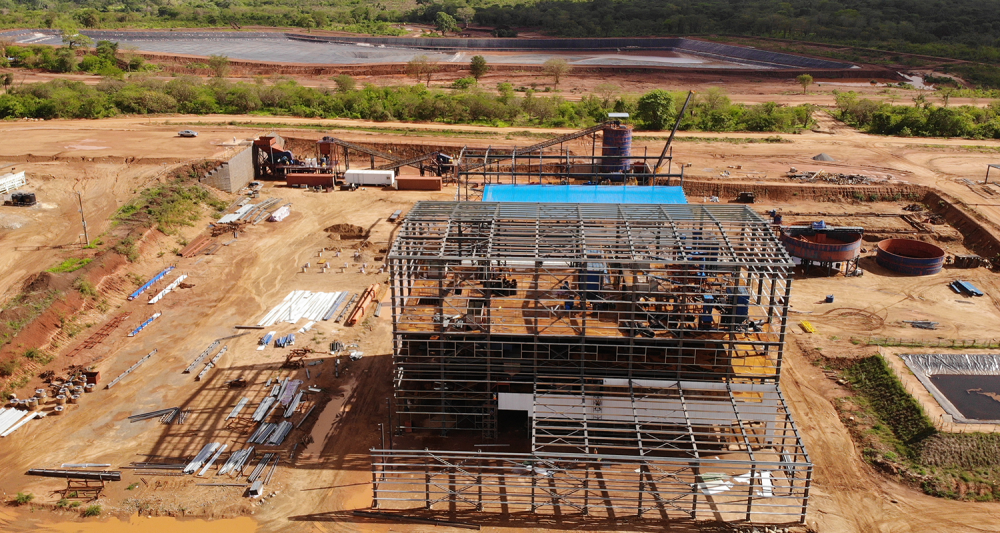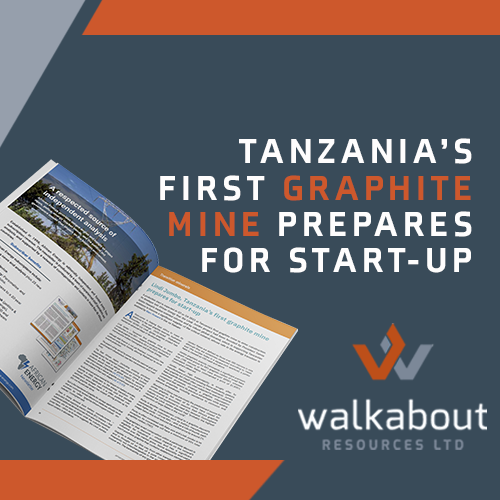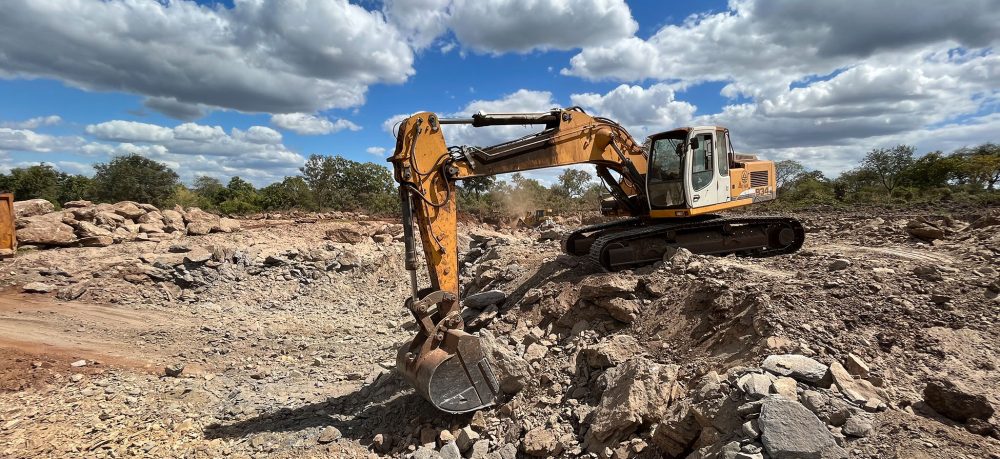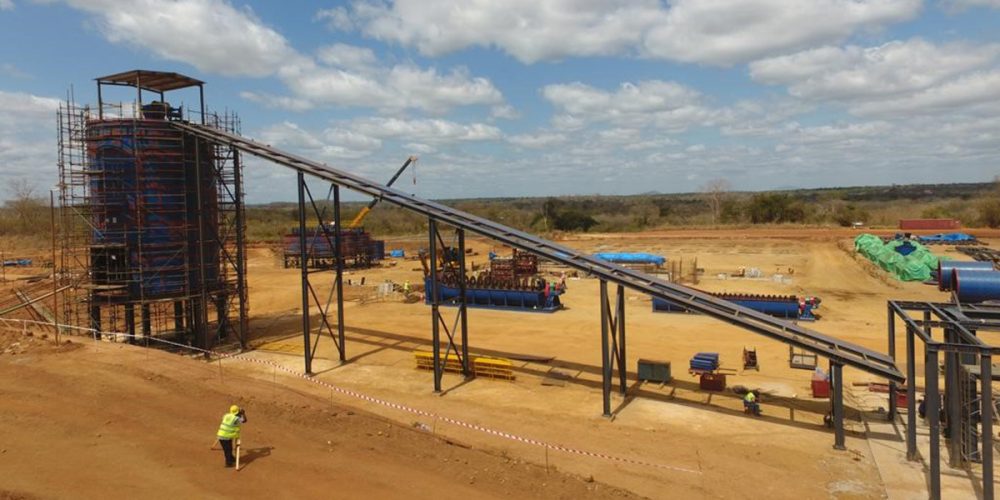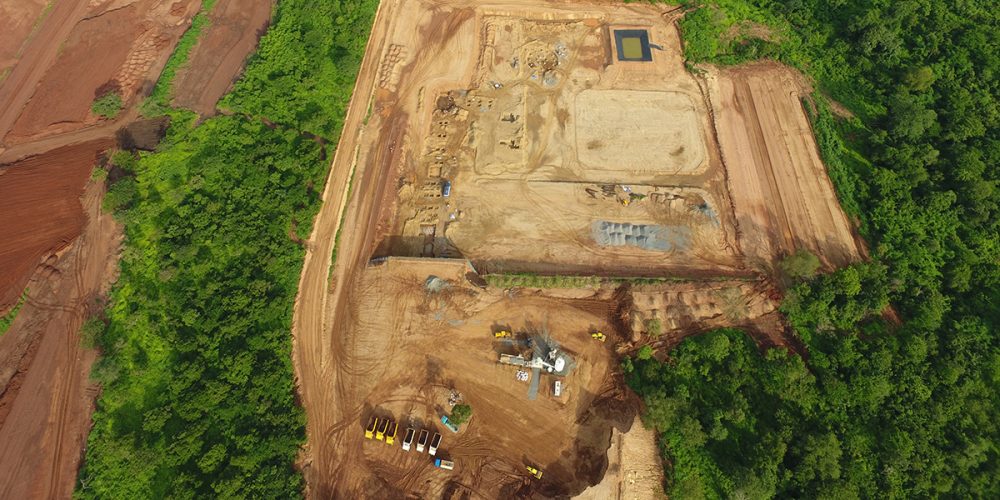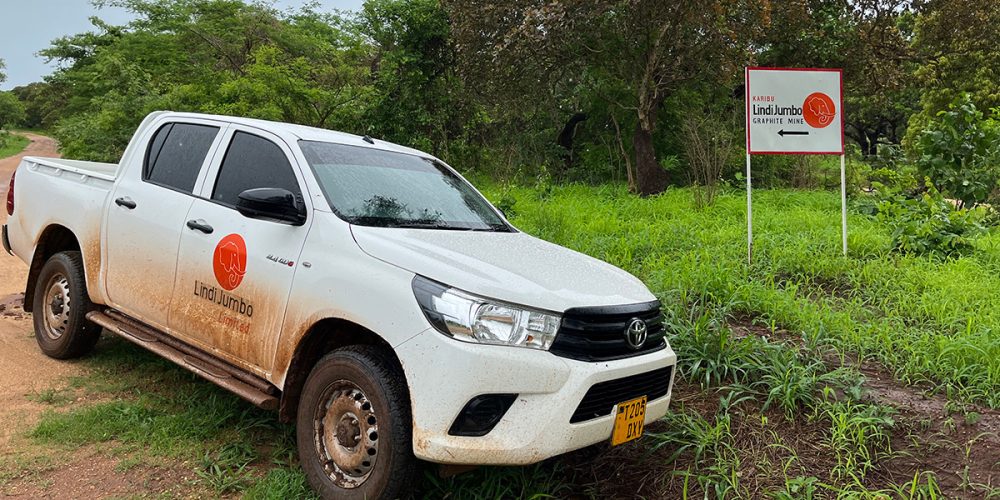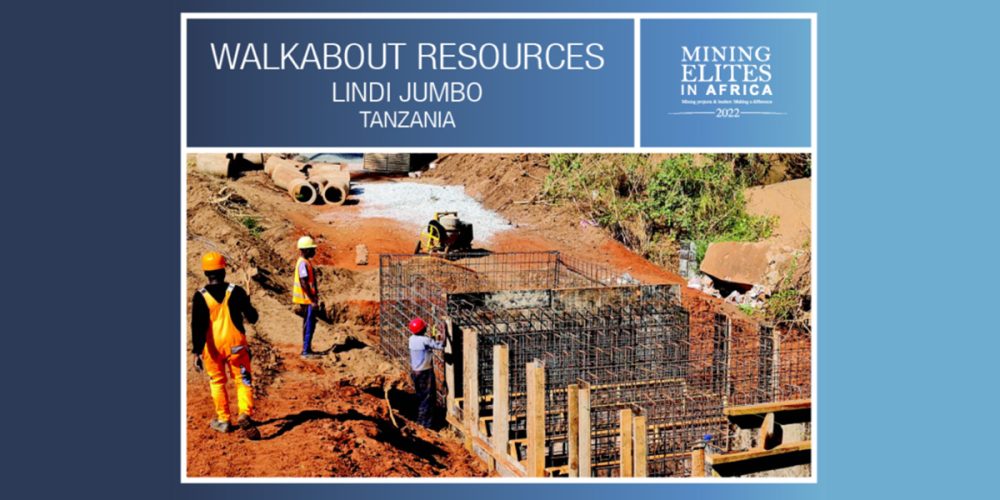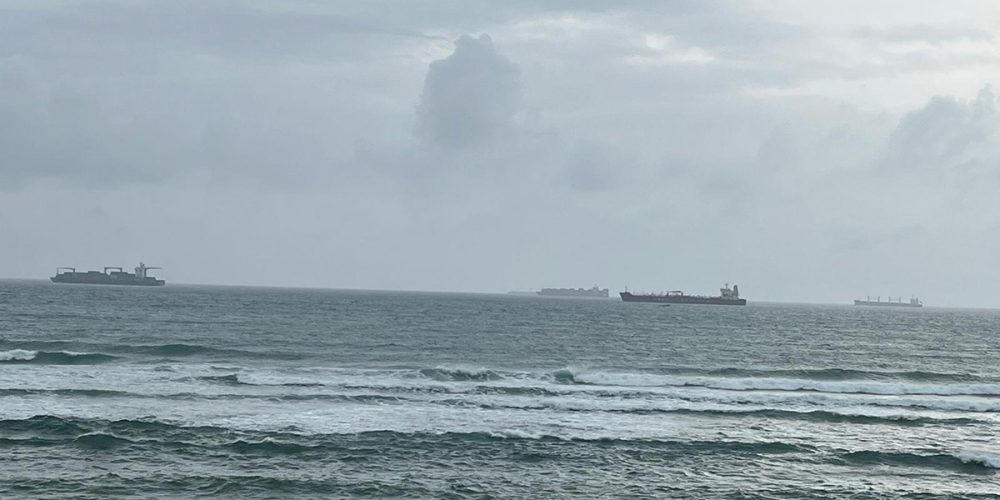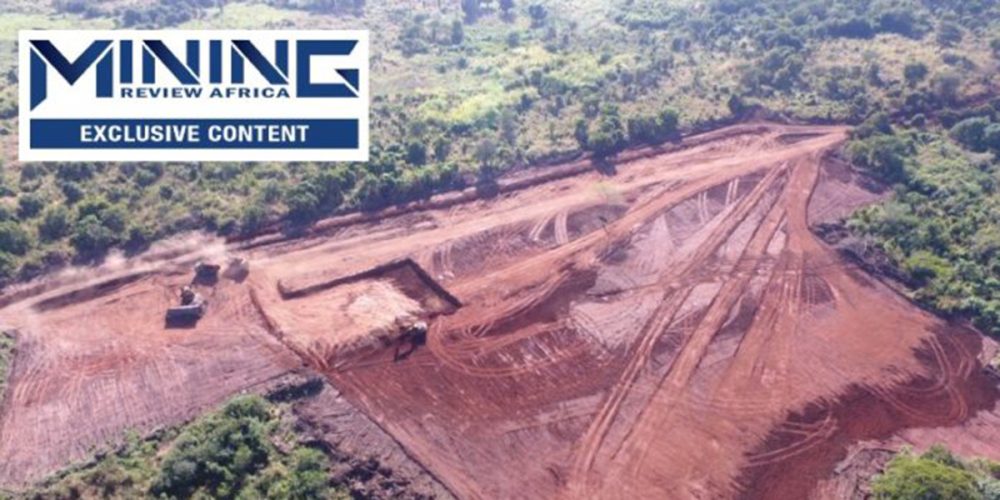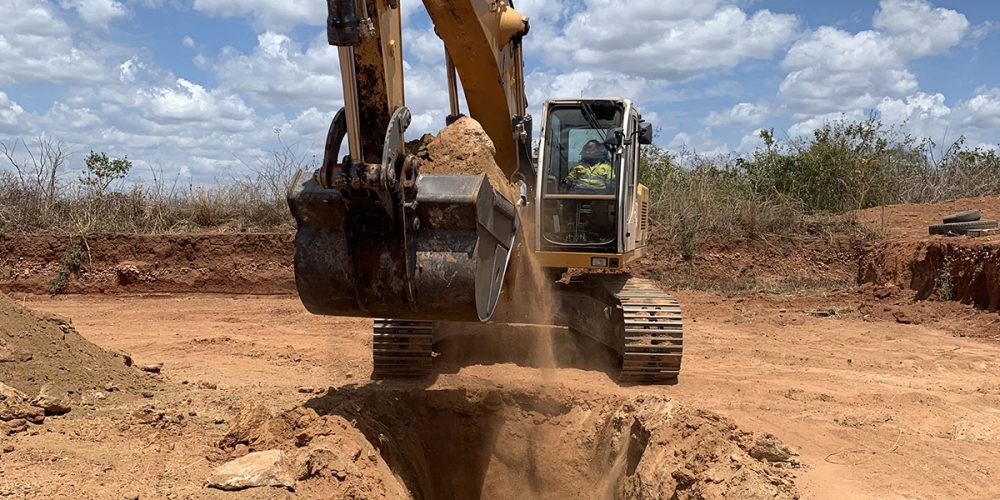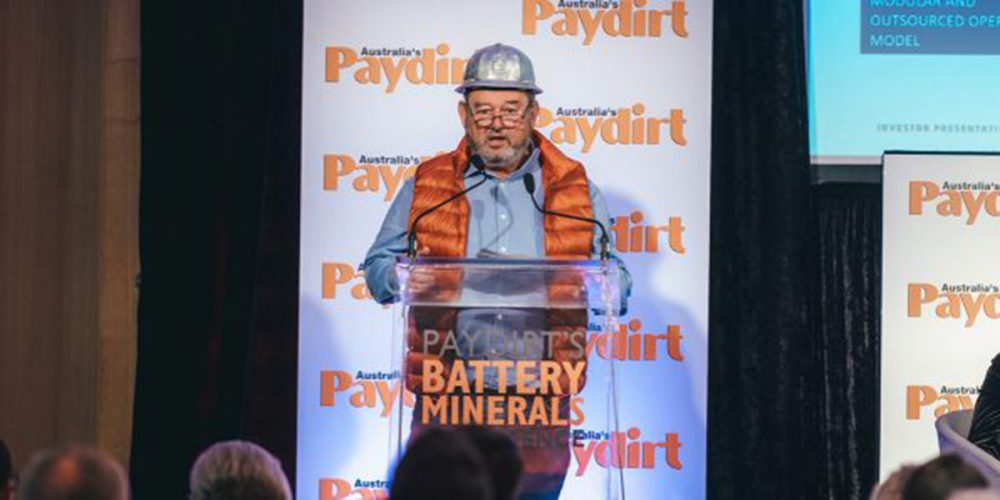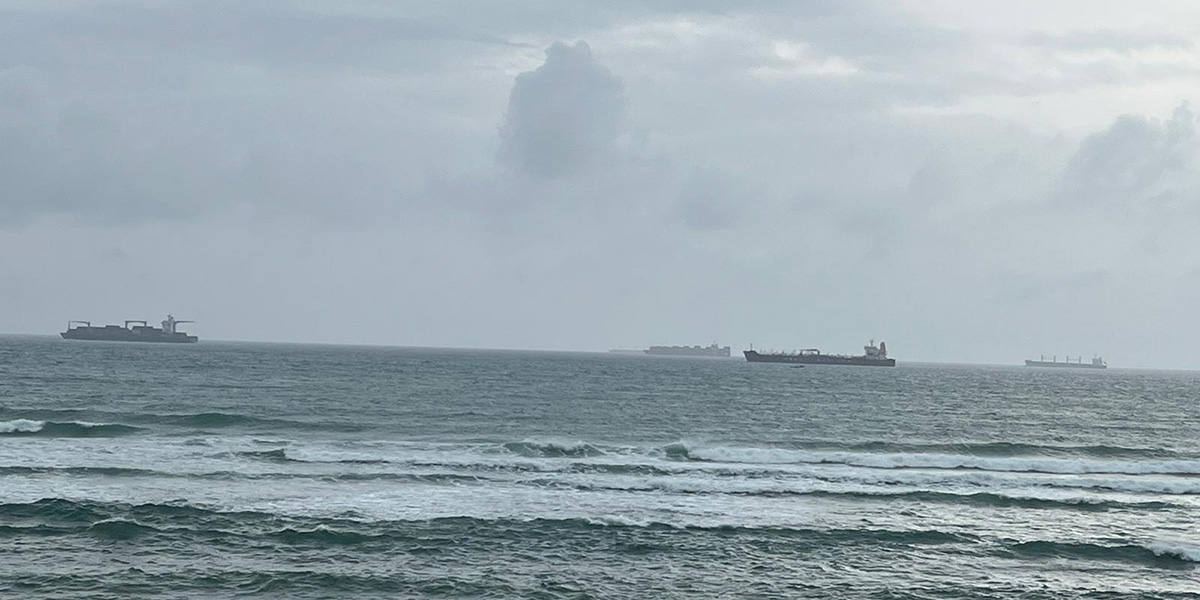
While global shipping delays have slowed down progress at Australian company Walkabout Resources’ Lindi Jumbo Graphite Project in Tanzania, fewer rainy days than usual during this time of year, enabled the team to accelerate construction activities on site.
Walkabout’s Lindi Jumbo Graphite Project is situated in south-eastern Tanzania, about 200km from the port of Mtwara. Walkabout’s licences are within the highly prospective Mozambique belt, a region that hosts some of the world’s highest grade, coarse flake graphite deposits.
The company has taken the project from discovery in October 2015 to the completion of a highly robust Definitive Feasibility Study within 16 months and construction activities commenced during the last quarter of 2021.
According to Walkabout Resources’ CEO Andrew Cunningham the first shipment of pant and mobile equipment has arrived in Dar es Salaam and is awaiting berth space in the port to enable offloading to commence.
“The well documented global shipping problems continue but we are working closely with Yantai Jinpeng Mining and Machinery (Jinpeng), the Chinese based Engineering, Procurement and Construction (EPC) contractor, the Axis Group and the logistics contractor in Tanzania to minimise the impacts of these shipping delays.
“Currently the delayed receipt of plant and equipment at site is not holding up the plant construction as the first few shipments were already destined for storage until site work required them. However, planned shipments in February will be more critical for site progress and future delays may have an impact on the project schedule,” said Cunningham in a recent statement by the company.
Construction activities remain on schedule
Despite these delays, construction activities on site continue well on all fronts with the focus shifting towards concrete works and the development of the Tailings Storage Facility (TSF). According to the quarterly report by Walkabout Resources the Run Of Mine (RoM) retaining wall has been completed and final shaping and trimming is in progress. The same type of wall (Terra-Trel) will be installed at the fine ore basin, and earthworks have commenced in this area.
Activities for the concrete works (excavator, shutter work, rebar cutting and bending and blinding) continue to plan. The clearing, topsoil removal and excavation of the key for the starter wall at the TSF is progressing to schedule.
“The site has generally experienced fewer wet days than expected and has allowed earthworks to proceed ahead of schedule. However, during January a major rainfall event occurred with the site receiving about a month’s rain in two days,” says Cunningham.
During the quarter, the second material project development agreement was executed for Engineering, Procurement and Construction (EPC) of the Lindi Jumbo Graphite Process Plant with Jinpeng.
The EPC contract includes procurement, manufacture, shipping, erection and commissioning of the process plant, training of Lindi Jumbo operations personnel, and mobile equipment for construction and processing needs. A team from Jinpeng is scheduled to arrive on site within the first quarter of 2022 and will remain until final handover over to Lindi Jumbo.
The manufacture and fabrication of processing plant equipment remains on schedule. Axis Group International continues to perform quality assurance over all items produced in China.
Following the early start by Jinpeng in September, the first shipment of mobile plant and equipment left China in December and arrived in Tanzania in January 2022.
Looking for hybrid solutions
Meanwhile, the Tanzanian Electrical Supply Company (TANESCO) agreed to an additional extension (at their cost) of the power line from the village of Matambarale for a further three kilometres to the Lindi Jumbo mine site.
The planned base-case is to supply diesel power to the entire Lindi Jumbo Mine. The supply of TANESCO grid power will replace a portion of the base case power supply and will connect peripheral infrastructure including the water supply borefield, Tailings Storage Facility (TSF), explosives magazine, fuel supply, accommodation camp, mining workshops and other shared infrastructure.
Work is underway to enable the integration of grid power with the planned on-site power generating facility. The supply of grid power to site at the start of the construction of the processing plant has the real possibility to lower both the construction and future operational costs. While limited to 1MW of power, the cost per kilowatt hour (kWh) has to be supplied to Lindi Jumbo is priced significantly below the planned alternatives. The company continues to investigate options to use hybrid power.
With good operating conditions during the period site bulk earthworks progressed on, or ahead of schedule, with critical task completed including the terracing and levelling of the processing plant area in preparation for the concrete works, completion of access and internal roads, completion of the Tanroads designed to withstand low-water drift from the stream near the town of Ruangwa, completion of demarcation of the Mining Licence Boundary, ROM Retaining wall (Terra Trel wall) – in progress and to schedule, raw water pond in progress and to schedule and awaiting the installation of the liner, TSF topsoil removal and stockpiling as well as bulk and restricted excavation – in progress and to schedule.
In December, a Jinpeng engineer attended site to audit and sign off on civil works undertaken by TNR Engineering (civils contractor) to ensure specifications has been met for the plant erection.
– Leon Louw
Read the original article in WhyAfrica

